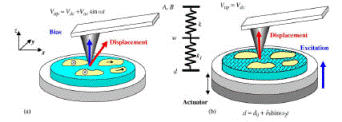Department of Physics and Astronomy: Publications and Other Research

Alexei Gruverman Publications
Document Type
Article
Date of this Version
2015
Citation
JOURNAL OF APPLIED PHYSICS 117, 172601 (2015); doi: 10.1063/1.4913753
Abstract
As semiconductor devices reach ever smaller dimensions, the challenge of power dissipation and quantum effect place a serious limit on the future device scaling. Recently, a multiferroic tunnel junction (MFTJ) with a ferroelectric barrier sandwiched between two ferromagnetic electrodes has drawn enormous interest due to its potential applications not only in multi-level data storage but also in electric field controlled spintronics and nanoferronics. Here, we present our investigations on four-level resistance states, giant tunneling electroresistance (TER) due to interfacial magnetoelectric coupling, and ferroelectric control of spin polarized tunneling in MFTJs. Coexistence of large tunneling magnetoresistance and TER has been observed in manganite/(Ba, Sr)TiO3/manganite MFTJs at low temperatures and room temperature four-resistance state devices were also obtained. To enhance the TER for potential logic operation with a magnetic memory, La0.7Sr0.3MnO3/BaTiO3/La0.5Ca0.5MnO3 /La0.7Sr0.3MnO3 MFTJs were designed by utilizing a bilayer tunneling barrier in which BaTiO3 is ferroelectric and La0.5Ca0.5MnO3 is close to ferromagnetic metal to antiferromagnetic insulator phase transition. The phase transition occurs when the ferroelectric polarization is reversed, resulting in an increase of TER by two orders of magnitude. Tunneling magnetoresistance can also be controlled by the ferroelectric polarization reversal, indicating strong magnetoelectric coupling at the interface.
Included in
Atomic, Molecular and Optical Physics Commons, Condensed Matter Physics Commons, Digital Circuits Commons, Electronic Devices and Semiconductor Manufacturing Commons, Nanotechnology Fabrication Commons


Comments
US government work.